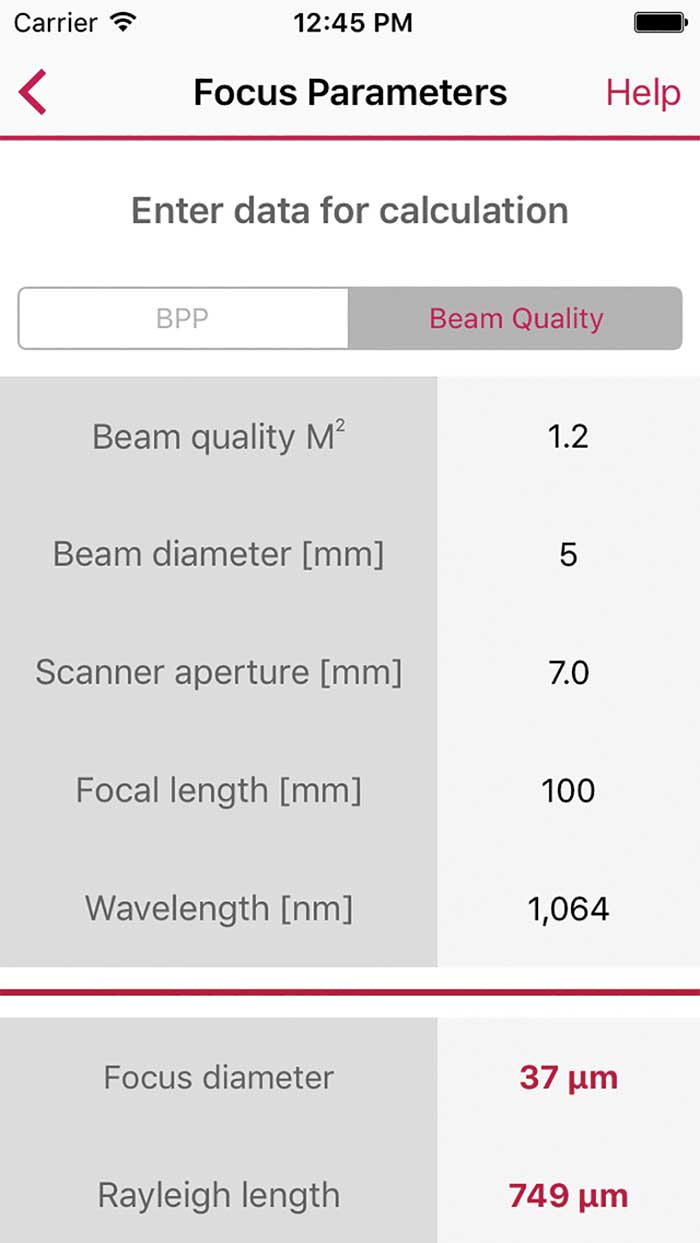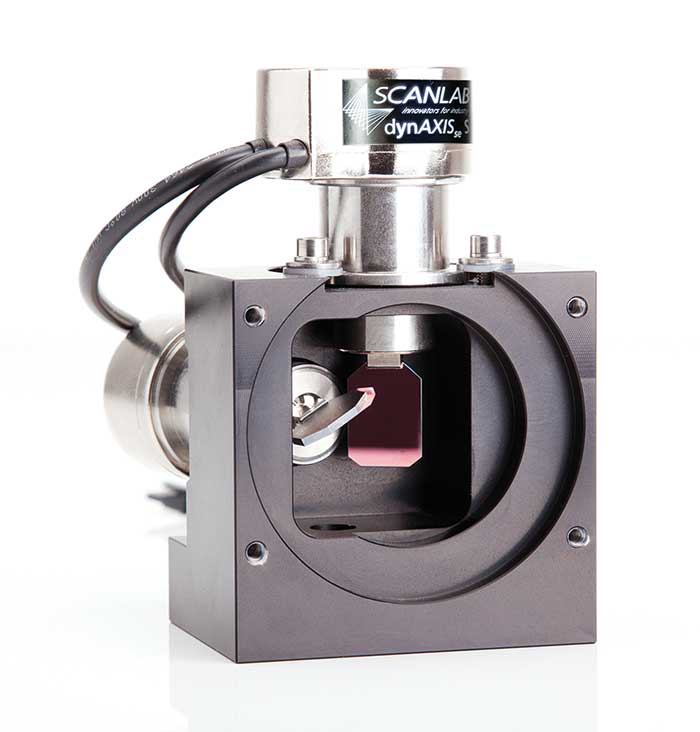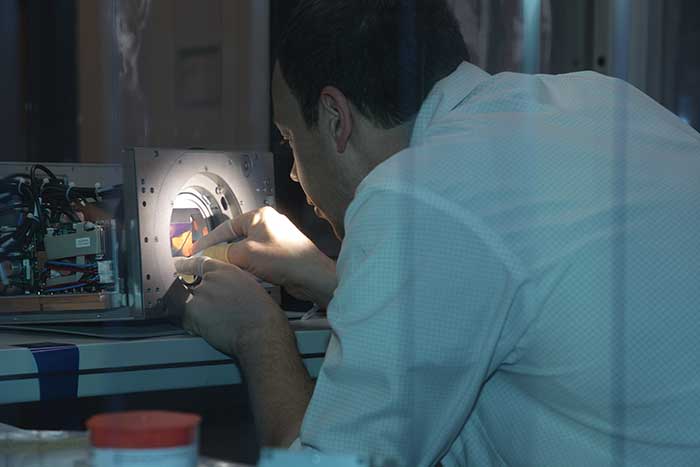HOLGER SCHLÜTER, SCANLAB GMBH
Choosing the right scanner system for individual applications involves finding the compromise between power handling, speed and precision that will best meet your specific needs. Asking the right questions inspired by daily practice is critical to choosing the best-suited scanner aperture, the perfect position detector technology and the best control algorithm. The step-by-step process described below will guide you through the selection of an optimal scanning solution for your application.

Installed on a smartphone, SCANLAB’s SCANcalc
app makes calculations from your data that will help you choose the
right scan solution for your needs. Courtesy of SCANLAB GmbH.
1. Choose the right laser: Based on your planned application, you will have to choose the right laser. For example, laser welding typically utilizes fiber or disk lasers with a wavelength of 1030 to 1070 nm and a power level of several kW. Laser marking often is based on q-switched solid-state or fiber lasers with a wavelength of 343 to 355 nm for plastic marking, 515 to 532 nm for special applications such as copper marking and 1030 to 1070 nm for all other marking applications. Laser cutting is normally not done with a scanner, with the exception of organic materials. Cutting or converting organic materials typically uses CO2 lasers ranging from 9.3 to 10.6 µm.
2. Calculate the focus spot diameter: If you know the focus spot diameter and the focal length of your lens, several online tools can help you calculate the input beam aperture and the scanner aperture. When starting with the input beam parameters, these same tools will allow you to resolve the focus spot diameter. Or you can install an app, such as the free SCANcalc, on your smartphone for a quick reckoning of the optical parameters of your scan system. Available as iOS and Android versions, the easy-to-use app also provides a glossary of terminology related to the scanner system and laser technology in general.
3. Determine scanner specifications: Ideally, you should talk to your scan system provider to determine the best-suited scan system for your XY field size, your speed and precision requirements, and to estimate your required power density. Your provider should be able to guide you in choosing from a wide range of alternatives to fulfill your specific needs.
4. Select the ideal focusing solution: A wide range of technologies focus the beam. The technologies are categorized into pre- and post-objective scanning. For the pre-objective scan systems, you can choose among the following alternatives, which are listed in order of complexity and costs: single element scan lenses, f-theta objectives and telecentric f-theta objectives. A telecentric f-theta objective is useful when the spot must not be distorted at the corners of the field of view. The beam will impact the workpiece under normal angle of incidence.
5. Choose the right position-detector technology: If you are looking for an economical scanning solution, an analog position detector might be the right choice. If you require very high accuracy for your application, a digital encoder will serve your needs better. An analog position detector confirms that a position has been achieved, while a digital encoder provides continuous position feedback.

A scan system with digital encoder technology, such as this one, is the best choice if you require very high accuracy for your application. Courtesy of SCANLAB GmbH.
6. Professional laser processing: In addition to the scan system itself, the setup of your laser jobs and processes is key to productivity. A professional laser processing software can provide notable savings and improvements. In a marking application, you will need to plan your job ahead of time, and such software can speed up the creation and fulfillment of the desired marking in a production environment. This can include the automated compilation of serial numbers, dates and bar codes.
7. Monitoring and quality control: You can additionally prevent rejects and reduce costs by including an automated process alignment and visual quality control with an intelligent monitoring and calibration system. To achieve proper and accurate laser processing, the scan field should be calibrated relative to the specific needs of the application. One such control system is SCANalign, which has an easy-to-use image processing solution that augments the selected scan system via ultra-precise monitoring and adjusting the laser processing on the workpiece.

A qualified laser system integrator has the
specific knowledge to successfully pull together your laser processing
tool. Courtesy of SCANLAB GmbH.
8. Selection of control system: The right control system will integrate the scan system smoothly into your manufacturing process. Typically there are two choices: The wide spread XY2-100 protocol is an industry standard interface with 16-bit resolution limits. The SL2-100 protocol supports 20-bit command resolution and dual data channels per axis.
9. Selecting a laser system integrator: Finally, when it comes to pulling it all together, a qualified laser system integrator is an invaluable resource to build the laser processing tool. The system integrator has specific knowledge of laser material interaction, machine design and automation to ensure a successful installation.
Meet the author
Dr. Holger Schlüter is responsible for business development at SCANLAB GmbH. Previously he worked as general manager of HighYAG Lasertechnologie GmbH, as CTO and COO at Technolas Perfect Vision GmbH, and as vice president, laser, at TRUMPF Inc. He holds a doctorate from RWTH Aachen, Germany; email: [email protected].